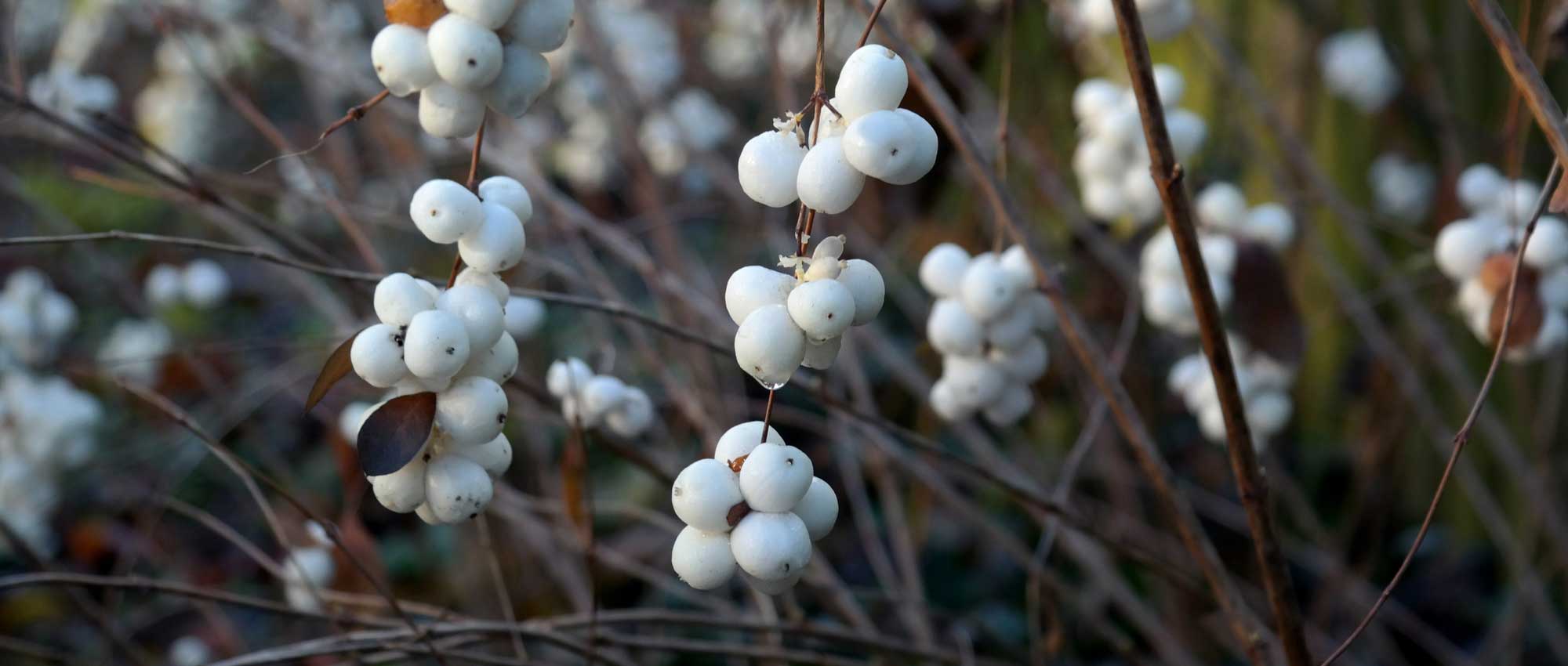
Symphorine : planting, pruning and care
Contents
Symphorine, in a nutshell
- The symphorine produces decorative berries in very soft shades, white or pale pink
- It is perfect for integrating into a hedge or forming a backdrop for a flowerbed.
- Easy to grow, it is not very susceptible to diseases; it is a hardy and completely resilient plant
- It tolerates shaded situations well, even dry ones
- Its melliferous flowering and berries promote biodiversity by attracting insects and birds!
A word from our Expert
Symphorine, or Symphoricarpos, is a deciduous bush whose round decorative berries earn it the lovely nickname of “pearl tree”. The colour of the berries ranges from white to pink, often with stunning silver reflections. The most common species is the white symphorine, Symphoricarpos albus, but there are also remarkable horticultural varieties such as ‘Magic Berry’, with violet-pink berries. There is even a creeping symphorine, suitable for ground cover: Symphoricarpos x chenaultii ‘Hancock’. With its melliferous flowering and generous fruiting, the symphorine is an ideal plant for promoting biodiversity by attracting insects and birds to the garden!
Easy to grow, the symphorine is a low-maintenance bush that withstands cold, drought, pollution, and diseases quite well! Planting takes place in spring or autumn, in cool, well-draining soil. The symphorine becomes denser over time, making it perfect for hedges or as a vegetative screen at the back of a garden. It will bring a very natural and wild aspect to the space! It requires little maintenance but will appreciate an annual addition of compost and a pruning at the end of winter.
Botany
Botanical data
- Latin name Symphoricarpos sp.
- Family Caprifoliaceae
- Common name Snowberry
- Flowering summer
- Height up to three metres
- Exposure sun or partial shade
- Soil type rich, cool, well-drained
- Hardiness -20 to -25 °C
The snowberries are deciduous bushes that produce decorative berries in autumn. They are native to North and Central America, with the exception of Symphoricarpos sinensis, which comes from Western China. Most species are found in the United States and Mexico. This is a small group of plants, comprising only 16 species, which have given rise to some stunning horticultural varieties. The most well-known species is Symphoricarpos albus, native to the United States and introduced to Europe in the early 19th century, where it tends to naturalise. In the wild, snowberry is mainly found in undergrowth or hedgerows, sometimes in meadows and along riverbanks.
Snowberry belongs to the Caprifoliaceae family. This is the family of honeysuckle, red valerian (Centranthus ruber), teasel (Dipsacus), knautia and scabious, valerian, and some ornamental shrubs like abelias, kolkwitzia, and weigela…
Etymologically, the Latin name Symphoricarpos comes from the Greek sumphoréō: to gather, and karpós: fruit, as the berries are generally clustered, rarely solitary. The species name albus means white, referring to the colour of the berries. The scientific name Symphoricarpos has subsequently given rise to the vernacular name Snowberry. In English, it is called Snowberry.
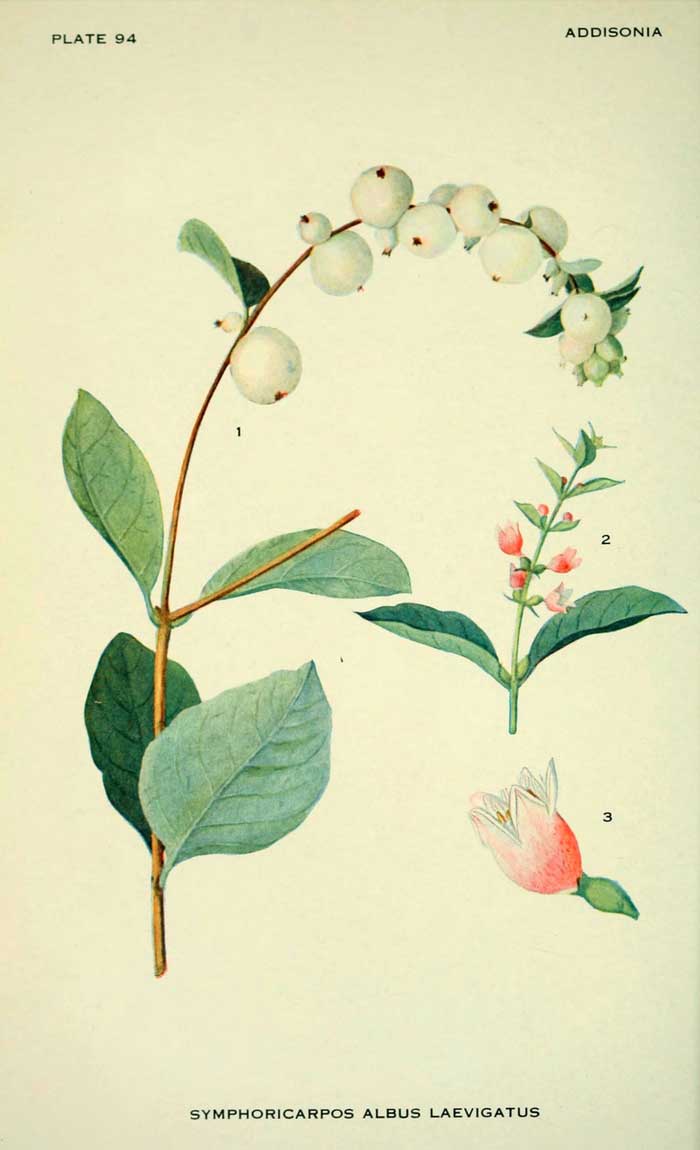
Symphoricarpos albus var. laevigatus: botanical illustration
Snowberry is a bush with an upright habit that grows quickly. It has running rootstocks, from which suckers emerge, allowing it to spread widely, thus making hedges denser and bushier. If planted near other plants, it can invade their space and will require control (pruning, removal of suckers…).
It has slender, arching, flexible branches. It has a rather light appearance, but it quickly thickens to form a bushy and dense shrub in a few years. In Symphoricarpos chenaultii, the branches have a lovely pink hue, providing a slight contrast with the green foliage.
Generally, snowberry reaches a maximum height of up to two metres, but can sometimes reach three metres depending on the varieties. Some shrubs have a very spreading habit and can be used as ground cover. This is the case with Symphoricarpos x chenaultii ‘Hancock’.
Snowberry produces very discreet flowers in summer, between July and September, which are not particularly interesting from an ornamental point of view. It bears small, pale pink, bell-shaped flowers. They are often clustered in clusters, sometimes in pairs, and more rarely solitary. They consist of five fused petals in a bell shape and five stamens. The inside of the corolla is surprisingly villous. The flowers typically measure less than seven millimetres in length. They are melliferous and contain nectar appreciated by bees.
Once flowering is over, snowberry bears spherical or ovoid berries, white or pink, sometimes red, in autumn. They often have beautiful silvery reflections. They are red-purple in Symphoricarpos orbiculatus. Depending on the varieties, they may lean more towards mauve. Symphoricarpos leucocarpa has pure white, immaculate fruits. The berries are clustered together on the stems. They often measure less than one centimetre in diameter, but can sometimes reach up to 6 cm in diameter, as seen in Symphoricarpos x chenaultii. They remain in place for a long time and can persist in winter after the leaves have fallen. They are consumed by birds, but unfortunately are not edible for humans.
Each berry contains two white seeds. You can collect them for sowing, but they are delicate to germinate as their coat is hard and impermeable. They can remain dormant for 10 years and require stratification to break this dormancy.

The berries of snowberry can be pink or white. On the left, Symphoricarpos ‘Mother of Pearl’; on the right, Symphoricarpos albus (photo H. Zell)
The leaves of snowberry are simple, entire, and either ovate or elliptical. Those of Symphoricarpos albus are sometimes lobed, in an irregular manner. They measure between two and five centimetres in length and are attached to the branch by a very short petiole. They have a very ordinary appearance, yet at the same time a soft and delicate quality. They are dark green, bluish, and their underside is a slightly lighter shade. The species doorenbosii, which has given rise to many varieties such as ‘Mother of Pearl’, has darker foliage, leaning towards blue. There are even variegated snowberries, with leaves edged in cream or yellow, such as Symphoricarpos albus ‘Variegatus’ or Symphoricarpos orbiculatus ‘Follis variegatis’. The leaves are opposite, arranged in pairs, one facing the other, on the branches. The leaves of snowberry are deciduous: they disappear in autumn and reappear in spring.

The flowering of snowberry (photo Walter Siegmund); the foliage of Symphoricarpos ‘Mother of Pearl’; the leaves of Symphoricarpos albus, sometimes lobed (photo Walter Siegmund)
The main varieties of symphorines
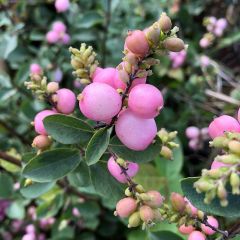
Symphoricarpos doorenbosii Amethyst
- Flowering time July to November
- Height at maturity 1,50 m

Symphorycarpos doorenboosii Mother Of Pearl
- Flowering time July to September
- Height at maturity 1,50 m

Symphoricarpos doorenboosii White Hedge
- Flowering time July to October
- Height at maturity 1,50 m
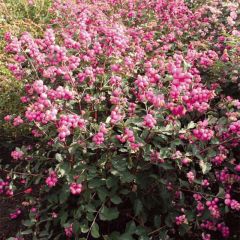
Symphoricarpos doorenboosii Magical Candy
- Flowering time July to November
- Height at maturity 1,50 m
Discover other Symphoricarpos
View all →Available in 0 sizes
Available in 0 sizes
Available in 1 sizes
Available in 4 sizes
Available in 1 sizes
Available in 3 sizes
Available in 1 sizes
Available in 3 sizes
Available in 1 sizes
Available in 1 sizes
Planting the snowberry
Where to plant?
The symphorine is a low-maintenance plant, capable of adapting to various situations.
Plant it preferably in full sun or partial shade. Although it has the advantage of tolerating shaded conditions, significant light is necessary to ensure good flowering, and thus abundant fruiting. If you live in the north of France, prefer a rather sunny exposure, while in the south, a partially shaded situation will be quite suitable.
The symphorine appreciates fertile soils rich in organic matter. Add compost or manure at the time of planting, and then each year in autumn.
Plant it in well-draining but moist substrate. It does not like heavy, clayey soils that remain waterlogged in winter. If your land is like this, plan for a drainage layer (pumice, gravel…) at the time of planting.
The symphorine is ideal for urban gardens as it tolerates pollution well. It seems to prefer neutral or slightly calcareous soils. Avoid planting it in soil with a distinctly acidic pH. It is also a very hardy plant; therefore, there is no need to protect it from frost or even wind.
The symphorine is particularly suited for planting at the back of the garden, or in a hard-to-reach location where you intervene little. It will form a vegetative screen that will thicken over the years, requiring minimal maintenance. To cover a slope, choose the variety Symphoricarpos x chenaultii ‘Hancock’, which has a very spreading habit, forming a ground cover.
When to plant?
Although it is possible to plant all year round, we recommend planting the symphorine preferably in spring or autumn. Avoid periods of frost.
How to plant?
- Moisten the root ball by placing it in a basin filled with water.
- Dig a planting hole, two to three times the size of the root ball.
- Add some well-decomposed compost. If your land is clayey, you can add pumice or gravel to improve drainage.
- Place the plant in the planting hole.
- Replace the soil and lightly compact it.
- Water.
- Install a layer of mulch at its base.
You can also plant it in a container, provided you choose one with good depth.
Discover everything you need to know about the symphorine in our video:
Care
The snowberry will appreciate an annual supply of compost or manure, which you will place at the base of the bush in autumn.
We recommend mulching with fallen leaves or ramial chipped wood (RCW). This will help retain soil moisture, prevent weeds from growing, and enrich the soil with organic matter.
Prune at the end of winter, around March. If you prune in summer or early autumn, you risk not having any berries. Pruning will allow the snowberry to maintain a more compact and denser habit. Start by removing damaged or dead branches. If the plant seems to lack vigour, carry out a rejuvenation pruning by cutting back quite hard. Otherwise, just perform a light maintenance pruning, limiting its height (especially if you are growing it as a hedge) and cutting branches that grow in the wrong direction and intertwine with other plants. You can also thin out the centre to allow air to circulate within the bush.
The snowberry produces numerous suckers that gradually colonise the area and may invade the space of nearby plants. If your garden is small and your plants are close together, you will need to remove the suckers and limit its spread.
Easy to care for and with no real cultivation issues, the snowberry is very little susceptible to diseases and pests.
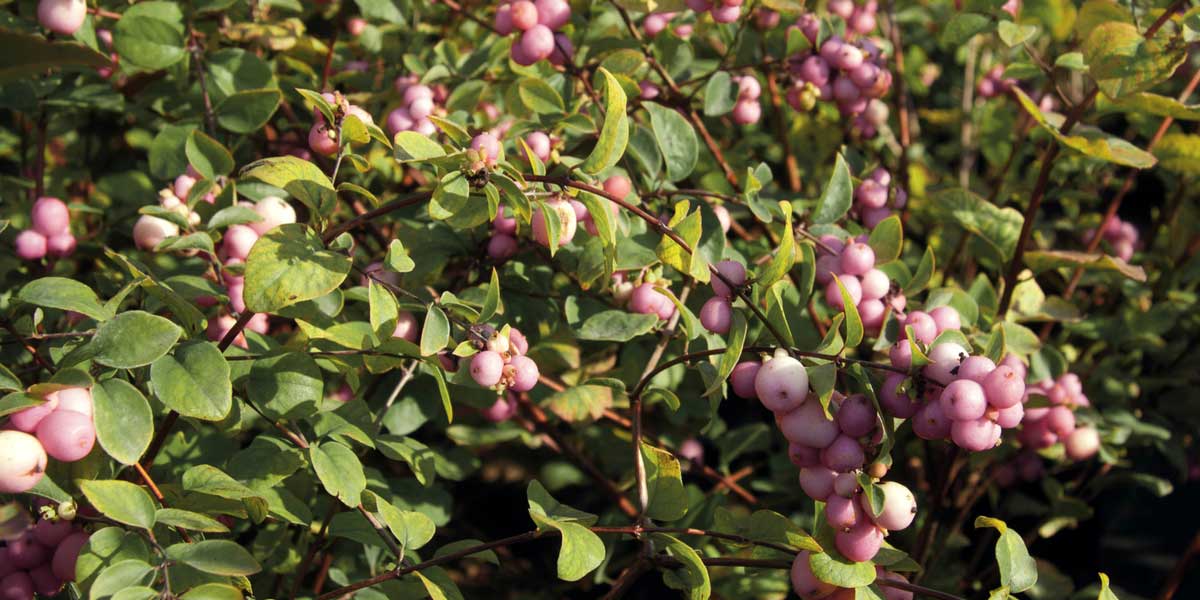
Symphoricarpos doorenbosii ‘Amethyst’
Propagating
To propagate symphorine, we recommend propagation by cuttings or collecting suckers. It is also possible to layer it.
Propagation by cuttings
Take semi-woody cuttings in late summer or early autumn, ideally around September.
- Prepare a pot by filling it with a mixture of potting soil and sand, then water it so that the substrate is moist.
- Take a cutting about ten centimetres long from a healthy branch, free from diseases or injuries. Cut cleanly, just below a node (the point where leaves attach to the stem). If there are leaves on the lower third of the stem, remove them. Only keep a few leaves on the upper part. Similarly, if the stem has flowers or fruits, remove them.
- Optionally dip the base of the cutting in plant hormone. This step is optional.
- Make a hole in the substrate, then place the cutting in it.
- Firm the soil around the stem.
- Place the pot out of direct sunlight.
The substrate should remain moist until the cutting takes root one to two months later. Grow it in a pot for a year, then plant it in the ground in autumn.
Collection of suckers
Symphorine is a sucker-forming plant: it has running rootstocks from which shoots emerge. You can therefore collect them in autumn by separating them from the mother plant. Plant them in fairly deep pots. Place them out of direct sunlight and ensure the substrate remains moist. Once they have taken root, you can plant them in the ground at their final location.
Sowing
Symphorine seeds are difficult to germinate. They are protected by dormancy and their coat is hard and thick. They can be stored for up to ten years. The seeds take a long time to germinate and require stratification to break their dormancy.
- Collect the seeds from inside the berries.
- Fill a seed tray with sand and potting soil, then moisten the substrate and mix in the seeds.
- Subject them to warm stratification by placing the pot at about 25 °C for three to four months.
- Then perform cold stratification at 5 °C for six months.
- Place the seeds in pots filled with potting soil. Cover them with a very thin layer of substrate.
- Keep the pots sheltered for the winter. Wait one to two years before planting them in their final location.
Association
With its ability to sucker, spread, and develop a bushy habit over time, the symphorine is perfect for creating a dense hedge, particularly at the back of a garden or in hard-to-reach areas. Pair it with other bushes to create a rustic hedge: viburnum, hawthorn, hornbeam, hazel… Remember to include some evergreen plants, such as andromedas, cotoneaster, camellias, mahonia, pittosporum…
Plant the symphorine with other shrubs with decorative berries: enjoy the splendid purple berries of callicarpa, the red fruits of cotoneaster, sacred bamboo, or rowan… Also discover the unique red and orange berries of spindle tree (Euonymus europaeus)! And those of Viburnum opulus, particularly with the ‘Xanthocarpum’ species, which has yellow-orange berries!
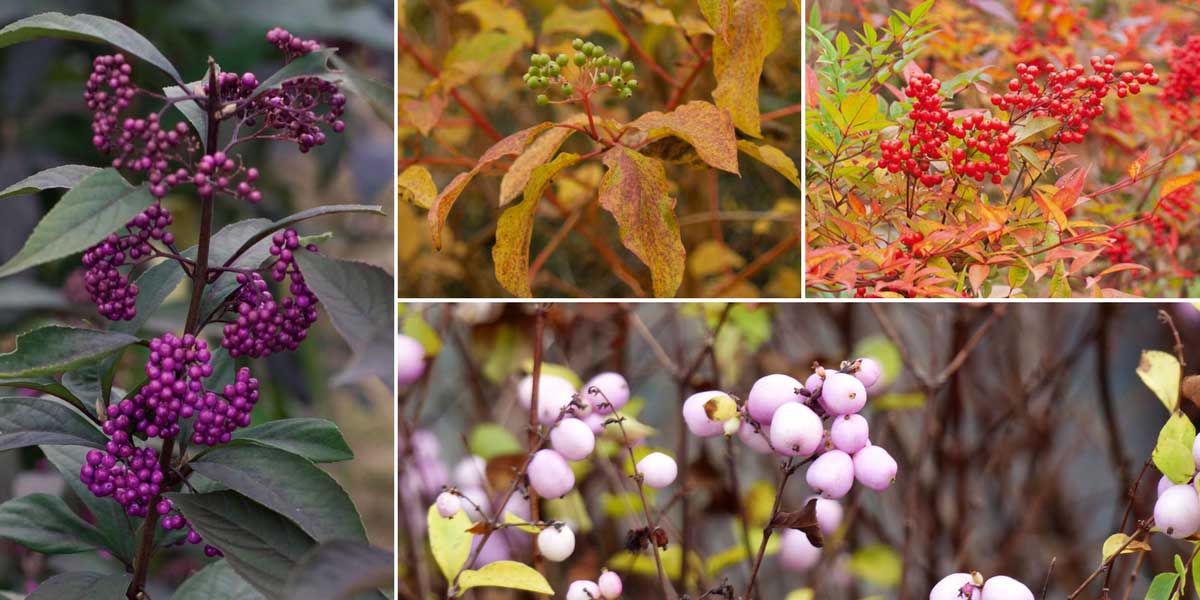
Pair the symphorine with other shrubs featuring decorative berries and foliage! Callicarpa ‘Purple Pearls’, Cornus sanguinea ‘Winter Beauty’, Nandina domestica, and Symphoricarpos ‘Mother of Pearl’
Combine the symphorine with autumn-flowering shrubs, such as Camellia sasanqua, osmanthus (Osmanthus fragrans or heterophyllus), laurustinus (Viburnum tinus), or Mahonia ‘Soft Caress’. Use the symphorine as a backdrop for your flowerbed, placing colourful flowering plants in front of it: asters, chrysanthemums, heathers… Also enjoy the decorative spikes of pennisetums! You can choose long-flowering plants that will attract attention in summer but remain decorative in autumn to accompany the berries of the symphorine. Opt for Gaura lindheimeri or Buenos Aires verbena.
You can create a splendid autumn scene by pairing the symphorine with plants whose foliage takes on vibrant hues in autumn: Japanese maple, dogwood, viburnum, or the stunning Parrotia persica… Also take advantage of trees and shrubs with decorative wood, such as bloodtwig dogwood, Prunus serrula, or Acer palmatum ‘Sangokaku’.
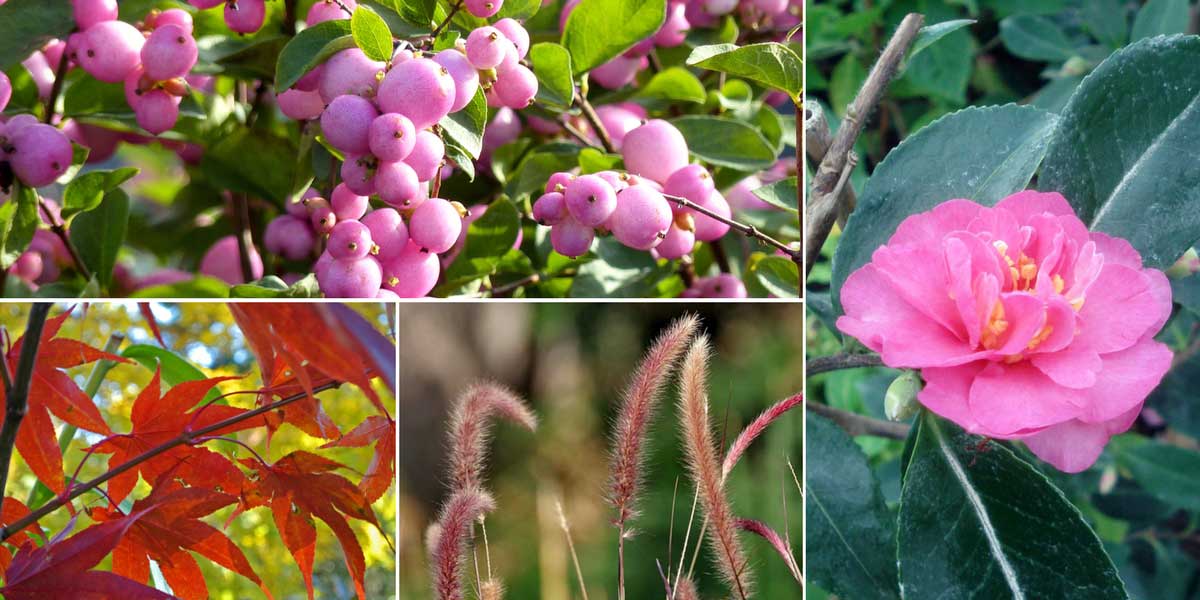
Symphoricarpos ‘Mother of Pearl’, Acer palmatum ‘Osakazuki’ (photo James Steakley), Pennisetum setaceum, and Camellia sasanqua ‘Showa no Sakae’
The symphorine tolerates pollution well, making it suitable for city gardens. You can pair it with decorative evergreen foliage: ferns, grasses, heucheras, and graphic plants: bamboos, Japanese maples, hostas, horsetails, mahonias…
As the symphorine naturally tends to spread, you can also plant it in isolation. This will prevent it from mingling with other shrubs and encroaching on their space.
Did you know?
- Properties and Uses
The bark, roots, and flowers of the snowberry have medicinal properties, including antipyretic and diuretic effects. It has been used by Native Americans and is still employed today in homeopathy. However, its berries are considered toxic and may cause nausea and irritation.
Useful resources
-
- Discover our range of symphorines!
- An article by Pierre on our blog – The symphorine and its fruits like sweets!
- Symphorine: which variety to choose to dress a bank?
- Learn more about toxic berry plants
Frequently asked questions
-
My snowberry is not producing (or producing few) berries!
Be mindful of the pruning period: the snowberry should be pruned at the end of winter... if you pruned it in summer or after flowering, it would not have been able to form any berries. Similarly, although the snowberry tolerates shade, good light is important to ensure generous fruiting. In dense shade, it will produce fewer berries.
- Subscribe!
- Contents































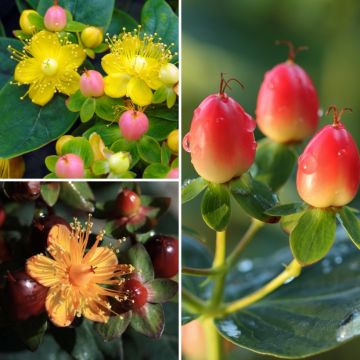
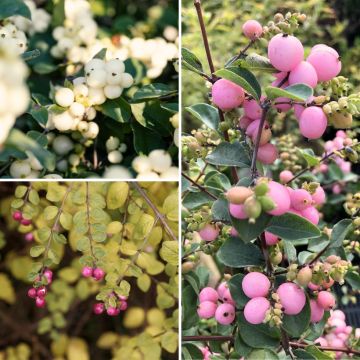
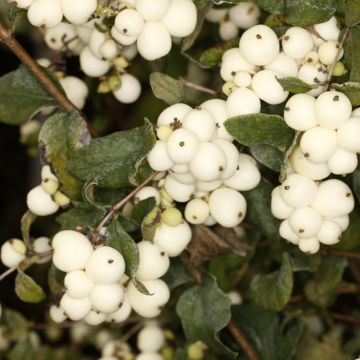
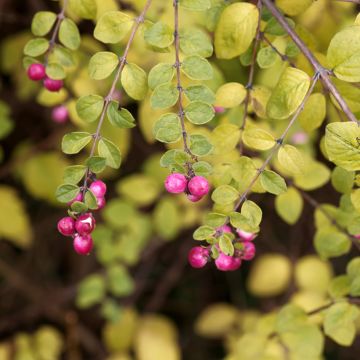
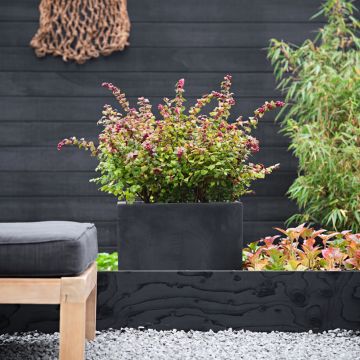
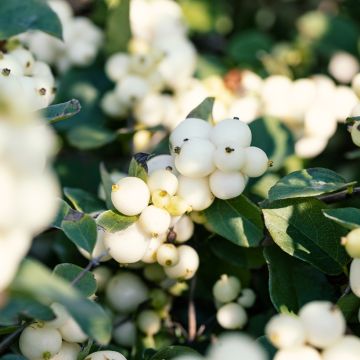
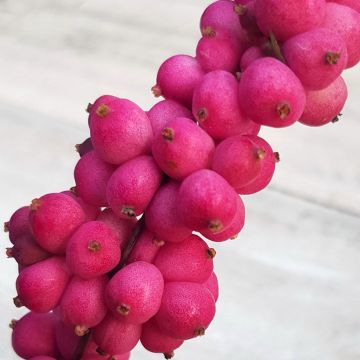

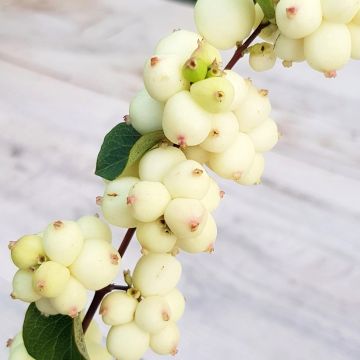
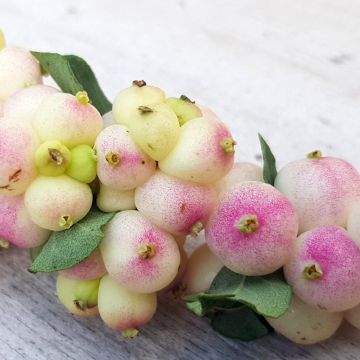
Comments